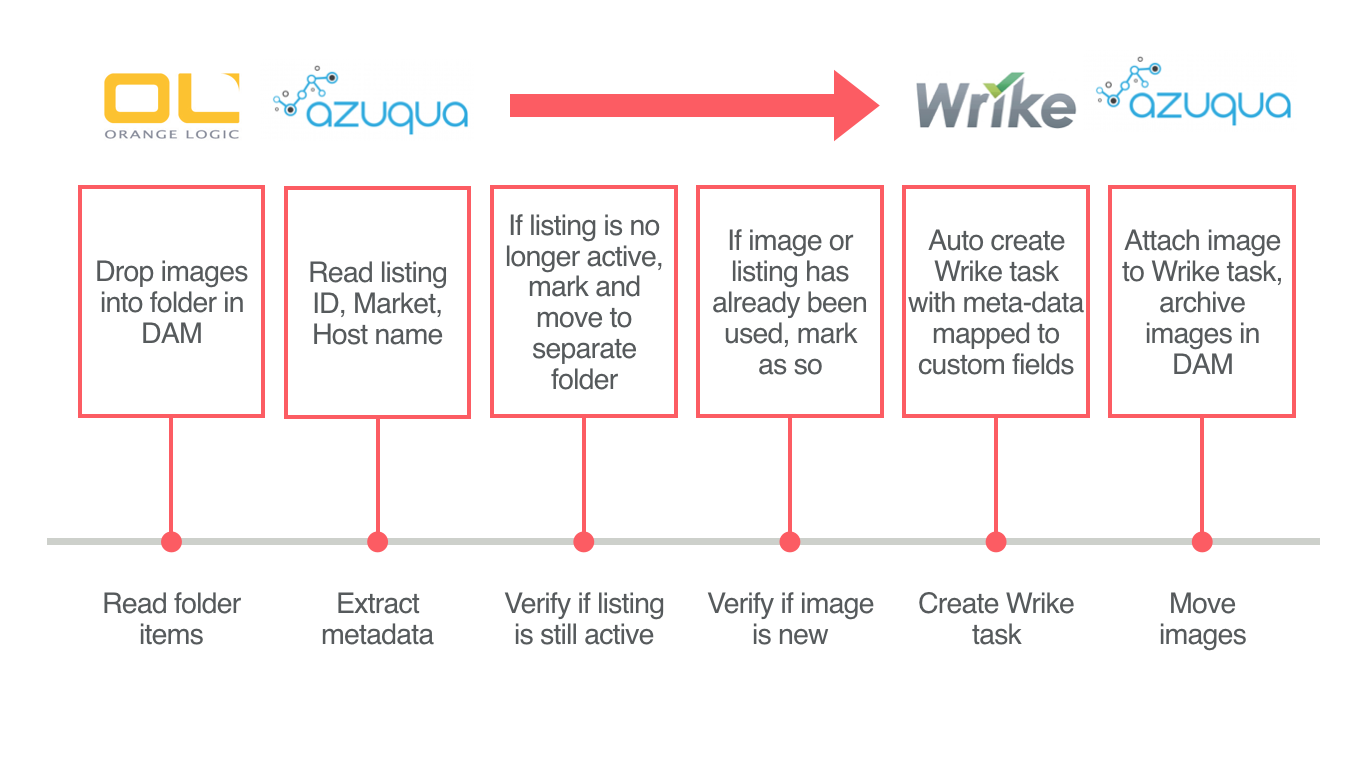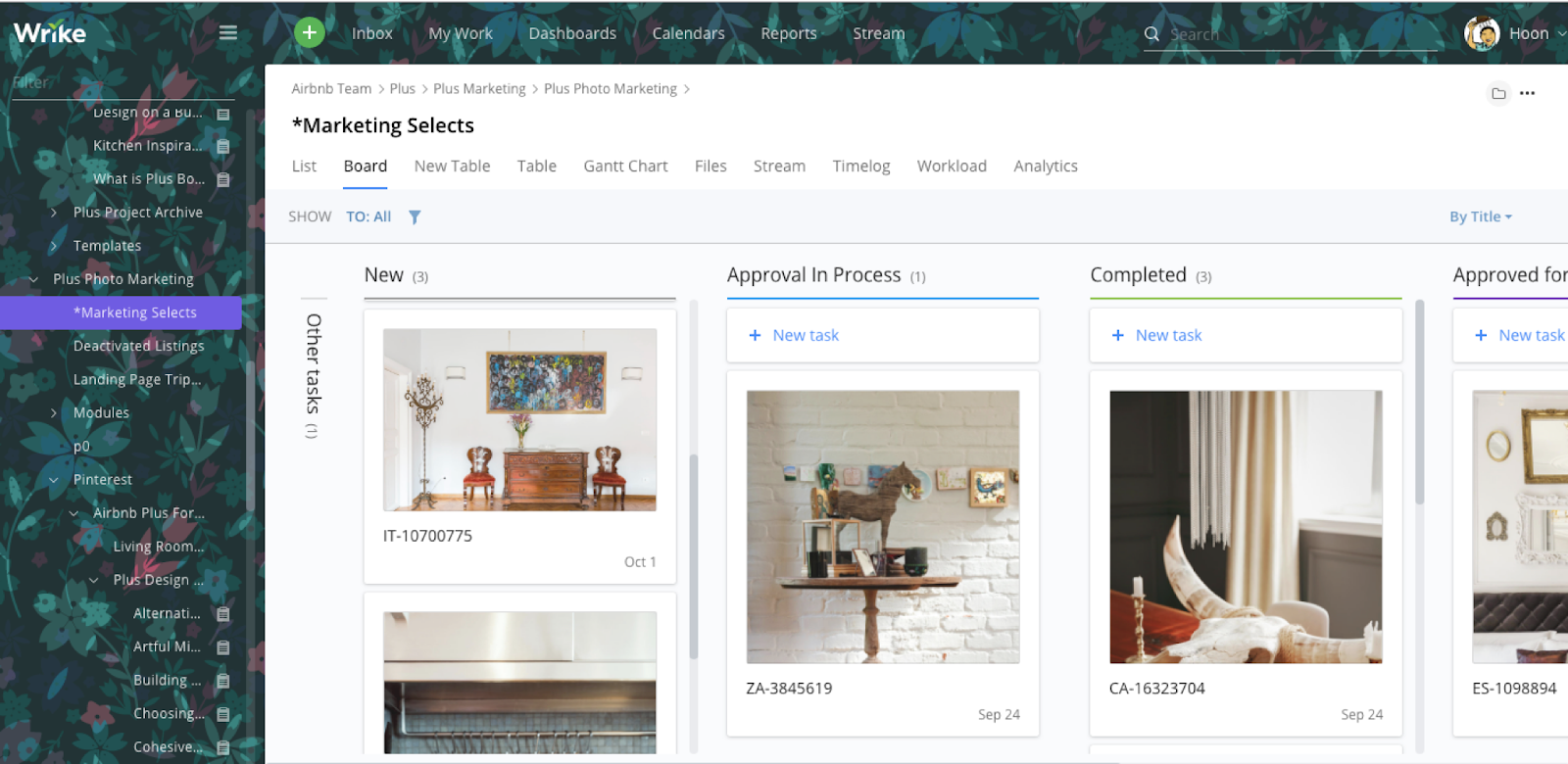Being a marketer in the digital revolution is tough. Information is created at lightning speed, requests flood in across channels, and a single campaign requires dozens of assets.
Some 61% of marketers feel pressure to prove their value, while 39% say they work at least 5 hours of overtime each week to meet demands.
The day-to-day is chaotic, preventing teams from executing efficiently and finding time to be strategic. Interfacing with clients further compounds these issues, leading to problems for even the highest-performing teams.
Automation, or the ability to reliably offload manual work to a machine, is growing increasingly critical as marketing teams look to scale production and efficiencies in the digital economy. In fact, tasks that occupy 45% of employee time could be automated by adopting proven technologies, according to research by McKinsey & Company.
Let’s take a look at how some of today’s leading marketing teams like Airbnb are leveraging automation to reduce time-consuming, repetitive, and routine work, as well as maximize the repeatability and predictability of their results.
1) Building a Single Source of Truth
The inability to locate information adds to the stress levels of 27% of low-stress employees and 42% of high-stress employees, according to our survey report The Stress Epidemic: Employees Are Looking for a Way Out. Searching for missing information also drains employee time and resources that could be spent on higher-value activities.
Keeping all project-related information in a single, accessible place makes it easy for employees to find what they need. It also helps prevent teams from working with outdated data or creating version control issues with files.
Rather than require their team to manually copy information from one platform to another, leading marketers use integrations to automatically exchange data between systems, and maintain a single source of truth. “Any tool we’re using, I look to see if it has a really good API so we can automate whatever is possible,” says Hoon Kim, Creative Production Manager at Airbnb.
No native integration? No problem. Tools like Zapier and Workato make it possible to connect disparate applications and expand your single source of truth. For example, Wrike’s Zapier integration with HubSpot automatically converts HubSpot forms into Wrike tasks, and assigns them to the appropriate worker.
2) Streamlining the Work Intake Process
Marketing teams also waste significant time consolidating requests across various platforms, and assigning them to the appropriate people. The more requests you get, the more time-consuming and repetitive this process becomes.
Collaborative work management platforms like Wrike help automate the intake processvia Dynamic Request Forms. These forms collect all the information marketers need by surfacing relevant form fields based on requesters’ real-time inputs.
Once submitted, Wrike’s forms are automatically routed to the appropriate folder and assigned to the best team member for the job. They can even kick off a pre-built project template. The best part? All project-related information lives in a single, referenceable place!
About 50% of Wrike marketing customers report a “significant impact” on the structure and effectiveness of their work processes with Wrike, according to The Marketing Executive’s Guide to Leading Business Transformation. More than a quarter have seen an “extremely significant impact.”
3) Templatizing Repeatable Patterns
Blog posts, ad campaigns, trade shows: Marketers do the same types of projects repeatedly. Even if the details are different, the steps needed to produce the final result are the same — so why spend time building workflows from scratch each time you start a new project?
“Reports in Wrike are great because you can start to see how much you’re doing a certain type of work and how long it’s taking you,” says Kim. “Then you start to know based on data what will create the most value to automate.”
Identify the kind of projects your team tackles most often, and create workflow templates for them in your work management platform. Each time you start a new project, you can simply clone them. Key components like dependencies, task duration, assignees, and reports are simply copied over.
Templatized processes save high-performance marketing teams a ton of time, freeing resources for more complex or custom projects. They also make it easier to measure and improve performance over time, driving repeatable wins for your team.
4) Removing Performance Bottlenecks
Digging into your work management data not only highlights repetitive work, but also helps identify common roadblocks. Are projects getting stuck in the same process step? Is there a particular handoff causing problems? Use automation to overcome any hurdles caused by human error.
For example, Kim noticed the many “in and out points” involved in creating PDFs was causing confusion and version control issues. Revision requests were sent via email to freelancers, who would then email back to say they made “all the changes” and attach a brand-new PDF.
This type of manual feedback process causes multiple issues. Communications get misplaced across email, stakeholders often fail to realize the project is waiting on their approval, and different file versions float around inboxes.
Now, Airbnb’s proofing and approvals are completed in Wrike. When a document is marked with changes, the freelancer is automatically notified. He or she addresses these changes directly in Wrike, and then uploads the updated file. The stakeholder is alerted the ball is back in their court. Edits are easily tracked, necessary changes are made, and all communication and files are kept in a single place.
How Airbnb Scaled Output With Automation
Airbnb Plus offers a premium selection of beautiful homes with exceptional hosts from across the Airbnb platform. Photography is a large piece of the Plus initiative, which requires site banners, inspirational Pinterest images, and more.
Each time a new photo or pin was created, the team added it to a designated Google Slides deck. All conversations around visual retouching and usage were done through slide comments. Over time, the deck became so large that it took two full minutes to load each time it was opened!
Hoon Kim quickly realized this highly manual process wasn’t scalable, and sought to streamline the photo selection, review, approval, and usage process by integrating the team’s various tools. Now, the process looks like this:
 Airbnb starts by placing new images into Orange Logic, their digital asset management (DAM) platform. The images are reviewed inside the DAM, and those selected for use are moved into a separate DAM folder. The images are then automatically organized and passed to Wrike as a “New” task ready for review.
Airbnb starts by placing new images into Orange Logic, their digital asset management (DAM) platform. The images are reviewed inside the DAM, and those selected for use are moved into a separate DAM folder. The images are then automatically organized and passed to Wrike as a “New” task ready for review.

Not only are task statuses clearly displayed within a designated Wrike Dashboard, but stakeholders also receive automated emails as soon as an image is ready for their review. All changes are tracked in Wrike, and final images are clearly labeled.
Kim and his team have effectively transformed a messy, confusing process into a structured, organized workflow with automation. Now the Airbnb Plus creative team can generate approved visuals more quickly.
You’ve Got the Power
Automation may feel like magic, but any marketing team can make it happen. Stop stressing out about projects and spending hours working overtime, and start looking for ways to lighten your team’s load through automation.
Try investigating the four areas covered in this blog post to see if there are ways for you to:
- Leverage APIs to reduce manual data entry and time spent searching for information
- Streamline your team’s intake process and automate project assignment
- Stop reinventing the wheel with templated workflows for your most-frequent projects
- Minimize human error by automating task reminders and notifications
–
This article first appeared in www.wrike.com
Seeking to build and grow your brand using the force of consumer insight, strategic foresight, creative disruption and technology prowess? Talk to us at +9714 3867728 or mail: info@groupisd.com or visit www.groupisd.com




